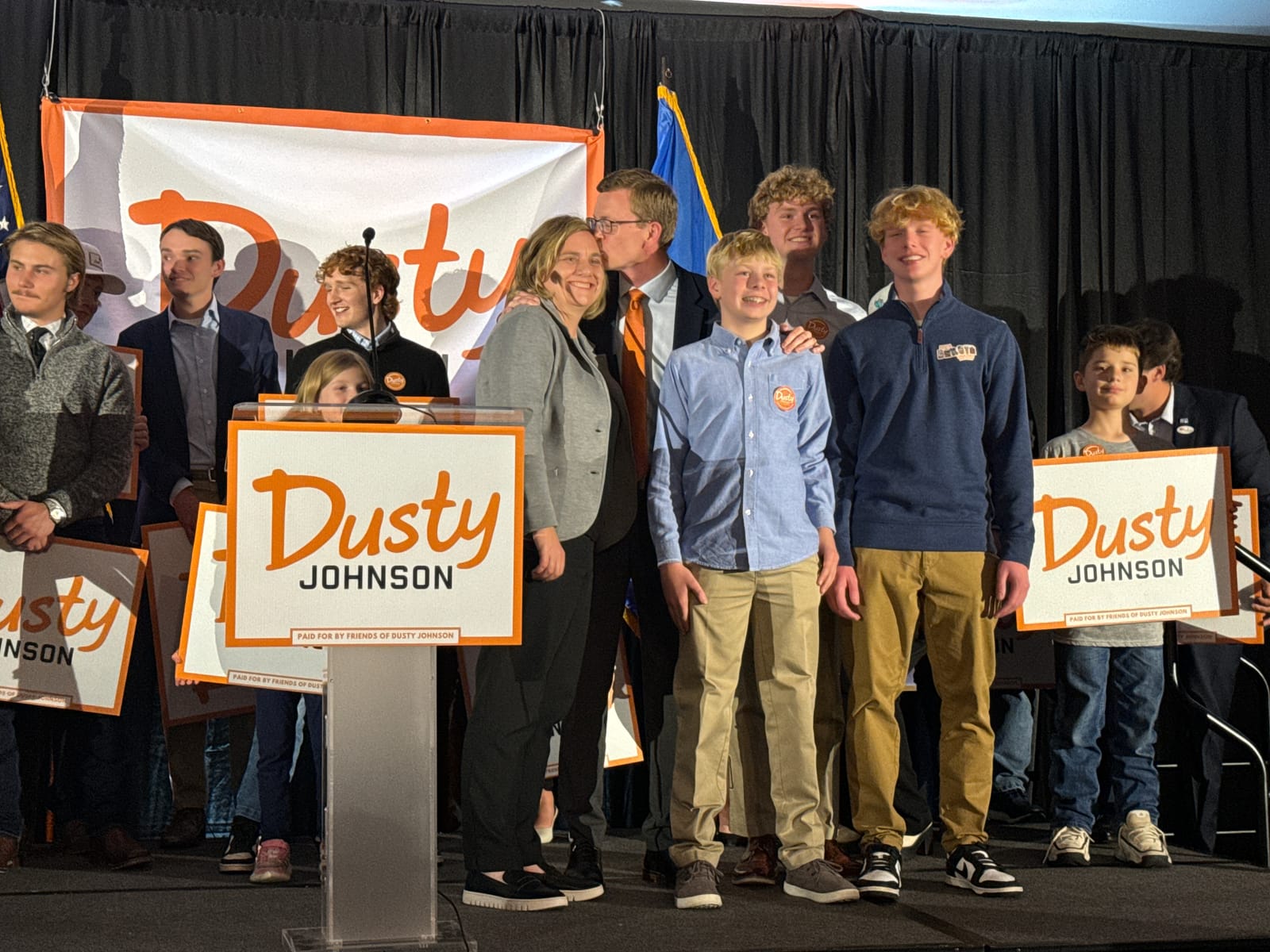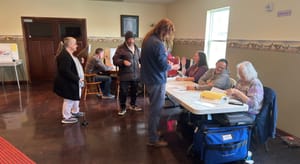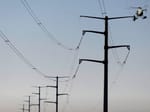The Republican rampage that propelled Donald Trump to the White House with majorities in the U.S. Senate and possibly the U.S. House of Representatives was felt strongly in conservative South Dakota.
Not just in candidate races, where GOP establishment favorites Rep. Dusty Johnson and Kristie Fiegen easily won re-election to Congress and South Dakota Public Utilities Commission, respectively.
But also on ballot measures, where progressive priorities such as abortion rights, grocery tax repeal and legalized recreational marijuana all went down to defeat, as did open primaries and even an attempt to get rid of male-only references in the state constitution, which fell prey to the uproar over pronouns.
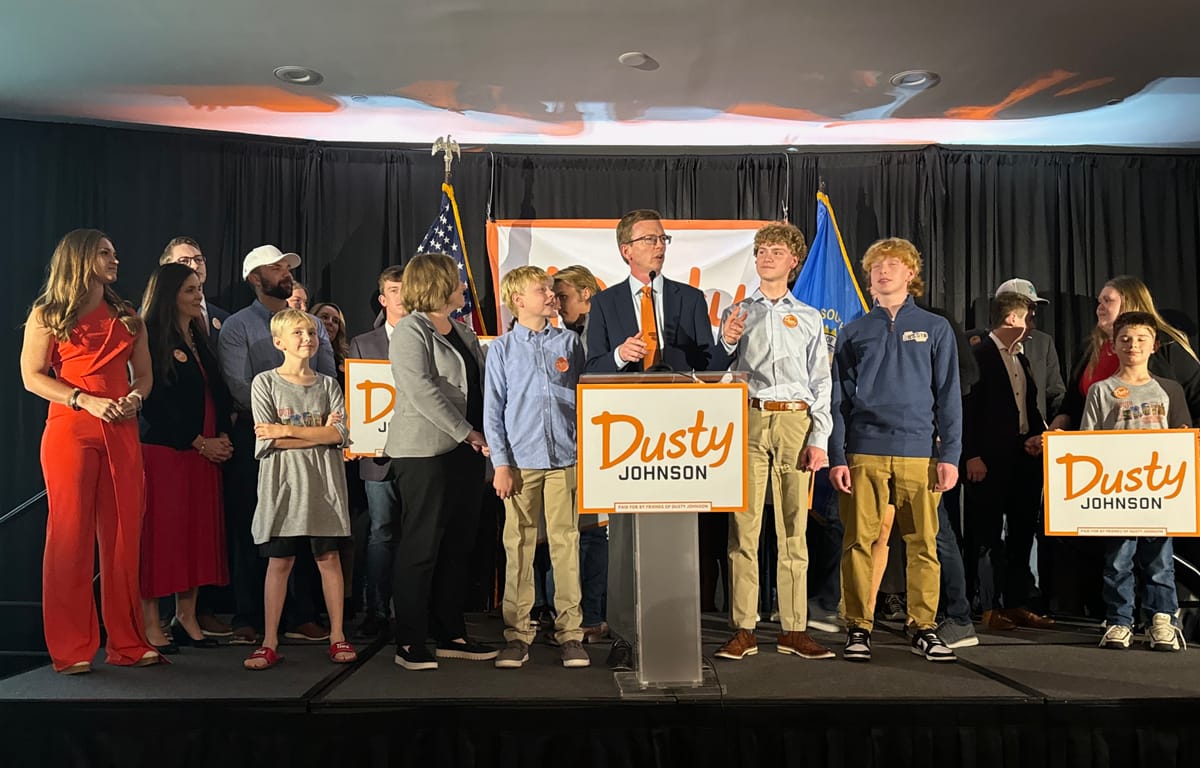
The only winning ballot initiative efforts involved the core conservative principle of work requirements for Medicaid expansion and the populist rancor over carbon pipelines, which led to Referred Law 21 going down in flames.
In state legislative races, delayed in some cases by the glacial pace of vote counting in Minnehaha County, South Dakota Republicans increased their super majority to 32-3 in the Senate and 64-6 in the House, setting up intraparty battles for leadership between establishment and populist factions.
Johnson, taking the stage at the Holiday Inn City Centre in Sioux Falls after being lauded by U.S. Sen. John Thune and Sioux Falls Mayor Paul TenHaken, talked about fighting back against inflation, illegal immigration, crime and government spending under a Trump administration and possible Republican trifecta.

"I'm here to tell you that's not easy work, but it's going to get a whole lot easier to get done after what we've seen tonight," Johnson said to cheers from the party faithful on a night that seemed like an endless stream of positive news for the GOP and soul-searching for everyone else.
Here are a few other main takeaways from South Dakota's 2024 election.
Trump's landslide reflected in South Dakota
Trump ended up with 65% of the statewide vote in South Dakota, a slight improvement of his 62% showings in 2016 and 2020.
The general perception was that the former president's resounding triumph nationally set the stage for what happened in South Dakota, from ballot amendments tanking to Republicans securing convincing legislative wins in vulnerable districts.
Inflation and the rising cost of living during the Biden Administration were big factors that led Monte Sandal of New Underwood to vote for Trump over Vice President Kamala Harris. Sandal, 55, owns a restaurant in New Underwood and a hot-tub servicing business in the Black Hills and has about 25 employees overall.

Sandal said inflation has made it difficult to afford food products at his restaurant and the chemicals needed to service about 600 hot tubs he has under contract.
“This election will dictate if my prices will increase because I’ve been eating a lot of costs the past few years,” he said.
Sandal said Trump’s demeanor has given him some pause but that, overall, he wants a business-focused president in the White House.
“I don't know if I'd want to sit down and have a beer with the guy,” he said. “But you can’t argue with his policies because he’s a businessman and I like a business way of thinking.”
GOP extends SD Senate edge to 32-3
One of the main questions entering the election was whether South Dakota Democrats could improve their strikingly low representation in Pierre, where Republicans outnumbered the junior party 94-11 the past two years, including 63-7 in the House and 31-4 in the Senate.
The short answer is no.
Republicans actually gained a Senate seat to make it 32-3, with Tamara Grove knocking off Democratic incumbent Shawn Bordeaux in District 26, which includes the Rosebud Indian Reservation and the West River I-90 corridor of Chamberlain, Presho and Murdo.
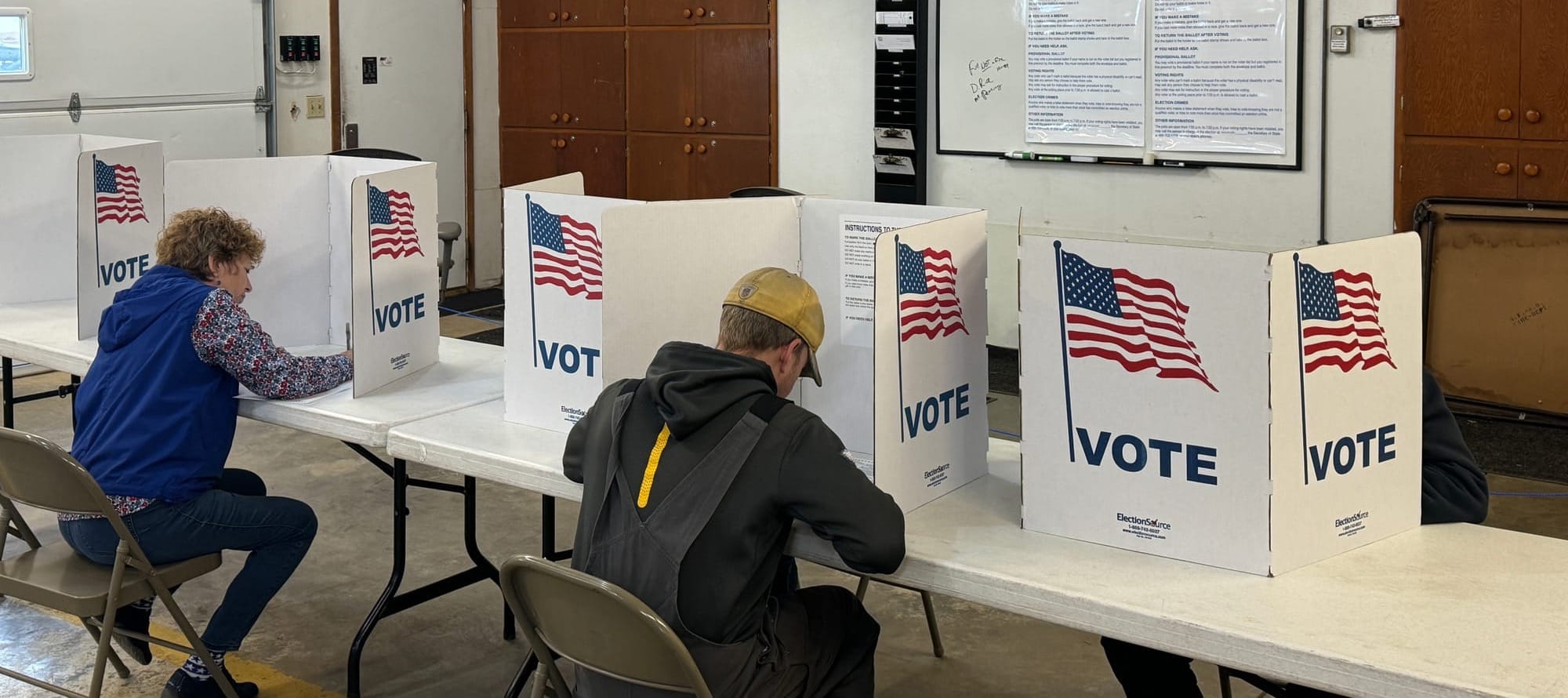
Former gubernatorial candidate Jamie Smith won District 15 in north-central Sioux Falls, holding the seat previously held by fellow Democrat Reynold Nesiba.
But other Democratic Senate hopefuls in Sioux Falls such as Clay Hoffman (District 12) and Sandra Henry (District 14) fell short. So did Sarah Carda, the Yankton School Board president who was seen as a strong candidate against Republican Lauren Nelson in District 18, which includes Yankton and Clay counties.
Nelson, who ran to Jean Hunhoff's right in the primary on a platform of limited government, property rights and Second Amendment protections, rode the Republican wave on Tuesday night to a comfortable victory with 57% of the vote.
Leadership battles could divide Republicans
Republicans also picked up a seat in the House to increase their advantage to 64-6, a low-water mark for the Democrats over the past two decades.
In District 26A, Republicans prevailed as populist Jana Hunt handily defeated Democrat Carl Peterson to take the seat formerly held by House Minority Leader Oren Lesmeister, who was term-limited.

Also, Kameron Nelson of Sioux Falls was ousted in District 10, where fellow Democratic incumbent Erin Healy (38%) and Republican Bobbi Andera (32%) finished ahead of Nelson (30%) in a tight race.
Democrats gained a seat in District 32 (Rapid City), where Nicole Uhre-Balk joined Republican Steve Duffy as the two top vote-getters.
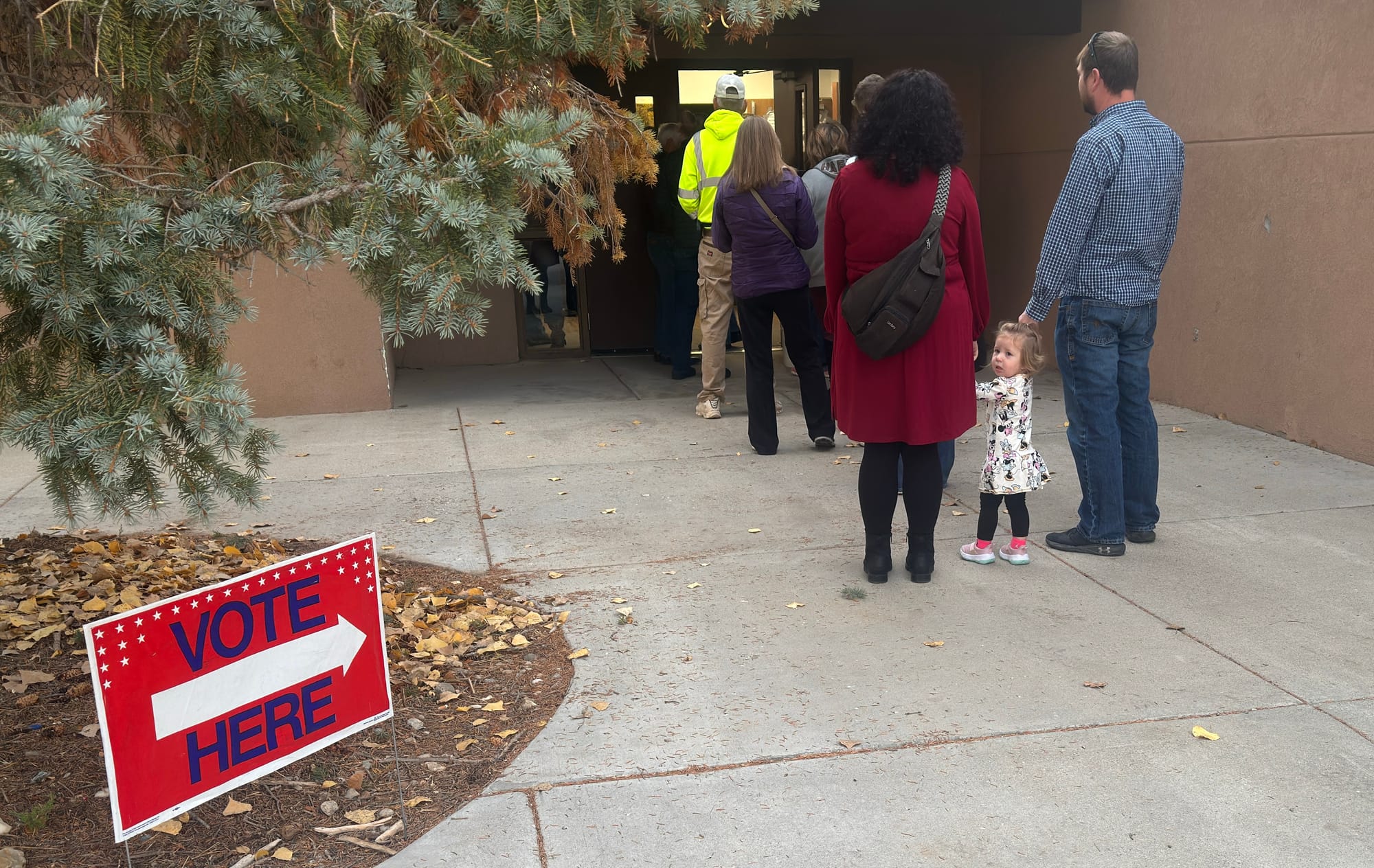
All eyes now turn to Pierre, where intraparty GOP battles for leadership positions will heavily influence the Legislature's policy-making machinery in 2025 and 2026.
Can a surge among populist candidates on the Republican right, animated by the carbon pipeline issue, lead to changes in caucus leadership, threatening the ability of the party’s pro-business establishment to craft and control policy?
Right now it's too close to call in the Senate and leaning establishment in the House, but an influx of new members makes it tough to assess.
The votes are scheduled for Friday night, so the suspense won't last long.
Money, organization fuels anti-abortion win
There was a marked difference in mood between the election night gatherings for anti-abortion Life Defense Fund and progressive petition group Dakotans for Health, which sponsored Amendment H to enshrine abortion rights in the South Dakota Constitution.
At the Best Western Ramkota in Sioux Falls, Republican state legislator Jon Hansen and longtime anti-abortion advocate Leslee Unruh flew their "No on G" banner proudly as results showed the amendment barely getting 40% of the statewide vote.
Hansen hoisted a glass of wine in the hotel corridor as Unruh spoke to News Watch about the momentum of the anti-abortion movement, which was reflected in out-of-state donations, ground-level organization and poll swings leading up to the election.
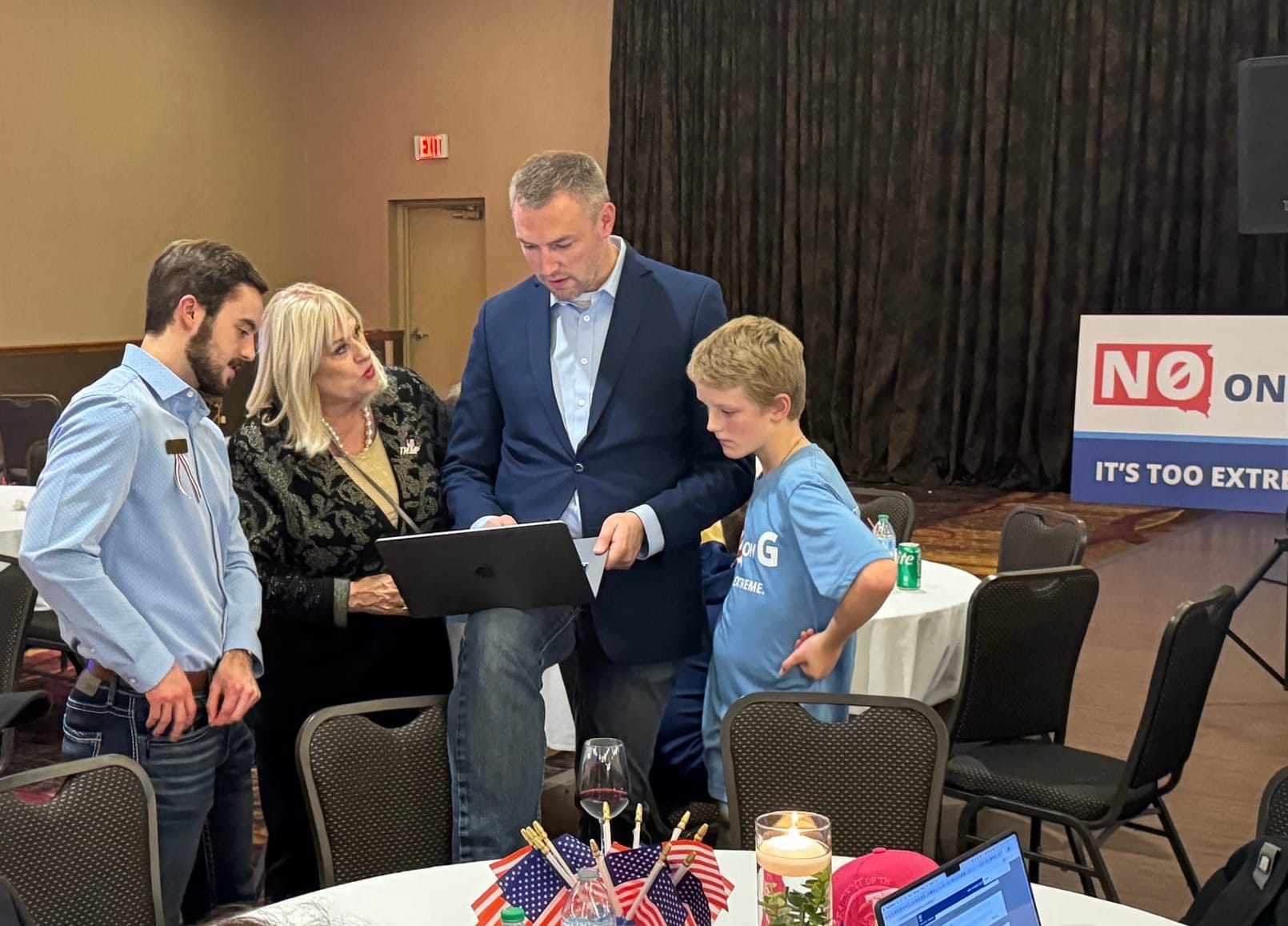
"I feel that there are too many people who are triggered by this conversation," said Unruh, who noted her decades of work at the Alpha Center, a Sioux Falls pregnancy resource center. "My hotline is going to be busy with women who are hurting because they feel (animosity) from both sides, and we can't do that. We have to meet people where they're at."
Though the campaign ran radio commercials conceding that South Dakota's restrictive abortion law "may need to be changed" in the Legislature, Unruh didn't offer any specifics changes that she would support.
Across town at the downtown ICON Lounge, Dakotans for Health founder Rick Weiland huddled with family and friends around 11 p.m., long after most attendees departed after seeing the handwriting on the wall for Amendment G and also Initiated Measure 28, the group's ill-fated grocery tax repeal measure.
Abortion rights measures in other states were immune to the Trumpian wave, with successful efforts in states that the former president won, such as Arizona, Missouri, Nevada and Montana.
That suggests there was more at play than just ideology and vibes in South Dakota, where voters rejected near-total abortion bans by statewide vote in 2006 and 2008.
The fact that Planned Parenthood and the American Civil Liberties Union declined to get behind Amendment G early in the process complicated efforts to raise money nationally and build an effective coalition of political and legal stakeholders.

Dakotans for Health and its volunteers found themselves on an island, outraised by a margin of 4-to-1 as the anti-abortion factions launched a robust and effective ad campaign calling the measure "too extreme."
"We didn't have any money to push back when they were pushing hard," Weiland told News Watch as a few stragglers watched election coverage on a big screen. "You can do a lot of damage with 3 million bucks if you keep throwing out messages of disinformation to scare people. It's almost like their campaign has made lying fashionable or something."
Unruh and Hansen wouldn't commit to whether a scheduled trial in Minnehaha County challenging Dakotans for Health's petition efforts would proceed starting in late January. One of the requests of the lawsuit was to prohibit Dakotans for Health "and those who worked with or for it” from being involved in petition or ballot measure campaigns for a period of four years.
"There's a lot wrong with the way these ballot initiatives are done," said Unruh. "My name's on (the lawsuit) and I would personally like it to go forward, but there are other people involved, so we'll just have to see."
Minnehaha's stagnant vote count draws ire
As the hour approached midnight on Tuesday at the Minnehaha County administration building in Sioux Falls, Leah Anderson was feeling the heat.
County staffers and election volunteers huddled around machine tabulators and deep stacks of ballots on the third floor as the rest of the state waited for vote results from the state's largest county, which still showed 0% precincts reporting.
“We have two machines running absentees, two machines processing Election Day ballots,” said Anderson, Minnehaha County's Republican auditor. “As you can see, some of the stacks of ballots are in the thousands. So it's just a slow process.”
By noon on Wednesday, the Secretary of State's website showed that Minnehaha still had only 15 out of 81 precincts (19%) reporting, while every other county in the state was at 100%.
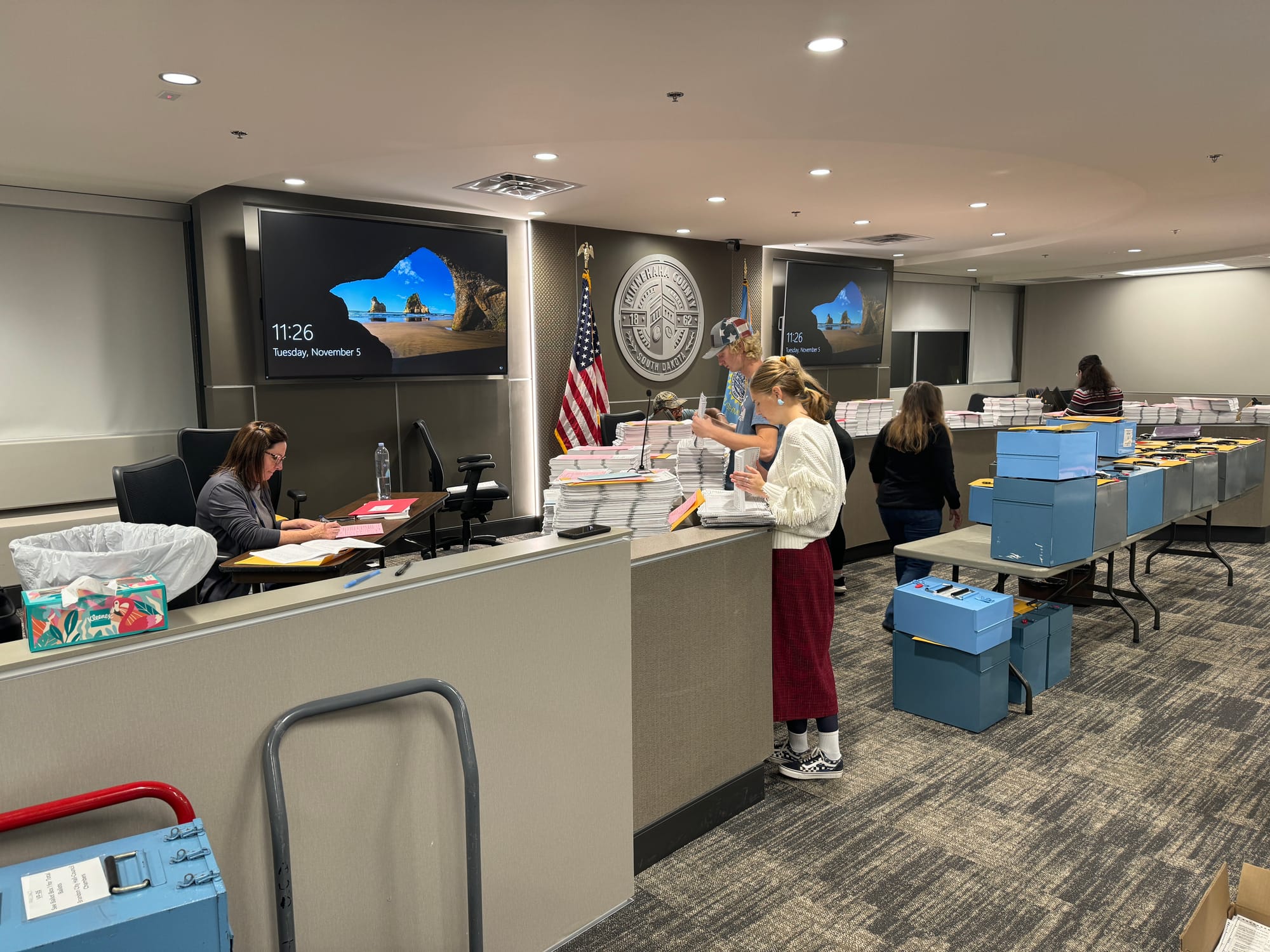
Under South Dakota law, absentee ballots can be processed prior to the close of polls on Election Day, but they can't be counted until the polls close.
According to the National Conference of State Legislatures, South Dakota is one of just 14 states that do not allow counting to begin until the polls close and one of just seven states that don't allow processing before the day of the election.
"It's not acceptable that Minnehaha County takes longer to count its votes than the entire state of Florida," Republican state legislator Tony Venhuizen, a former chief of staff to governors Kristi Noem and Dennis Daugaard, told News Watch. "I'm hearing from legislators of every political stripe who are very concerned about this. I don't know at this point if a legislative fix is necessary, but I think there would be a lot of openness to that. Trust in an election system depends on having fast and reliable results."
Lingering questions
Now that the election itself is over, what questions do you have about the process? Email them to info@sdnewswatch.org or fill out the reader survey at the link below.

This story was produced by South Dakota News Watch, an independent, nonprofit news organization. Read more in-depth stories at sdnewswatch.org and sign up for an email every few days to get stories as soon as they're published. Contact Stu Whitney at at stu.whitney@sdnewswatch.org.

